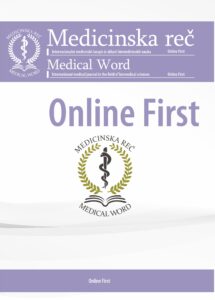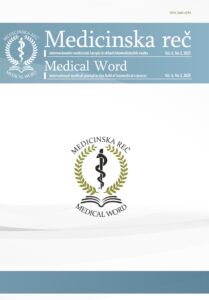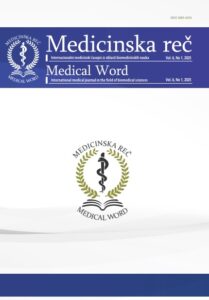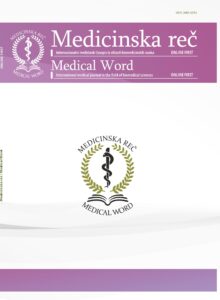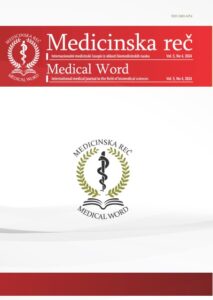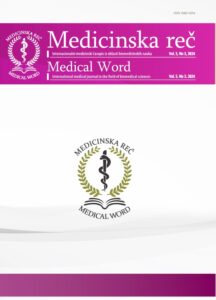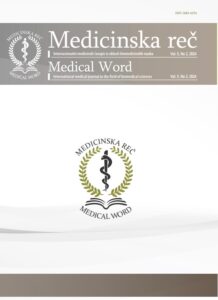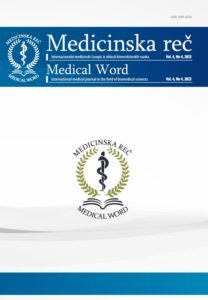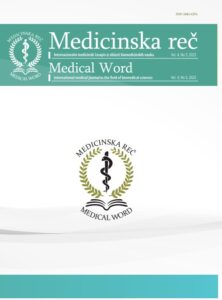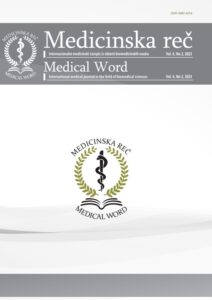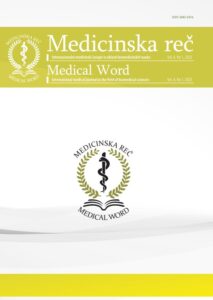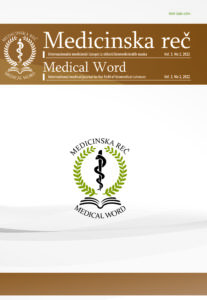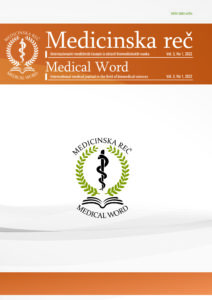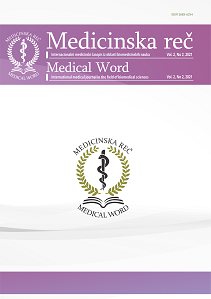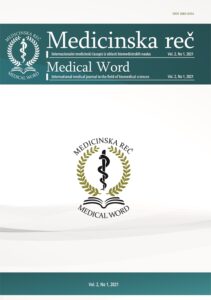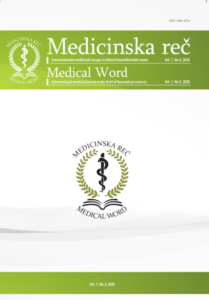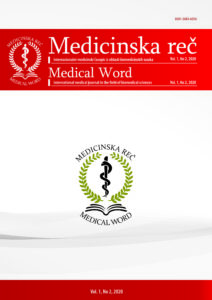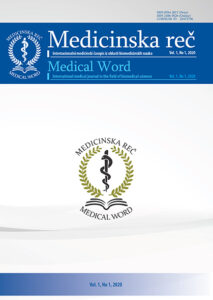Antibakterijska aktivnost etarskih ulja odabranih lekovitih biljaka na izazivače respiratornih infekcija u pedijatrijskoj populaciji
Originalni rad
Svetlana Bogdanović, Ivana Zlatković, Ana Veličković, Dobrila Ranđelović, Zvonko Zlatanović
57–60
https://doi.org/10.5937/medrec2402057B
Apstrakt
Akutne respiratorne infekcije (ARI) su najčešće infektivne bolesti današnjice i predstavljaju razlog za čak 75% propisanih antibiotika u svetu. Iz tog razloga, ARI su odgovorne za pojavu rezistentnosti bakterija na najčešće primenjivane antibiotike.
Cilj je bio ispitivanje potencijalnih antibakterijskih aktivnosti etarskog ulja lekovitih biljaka Lavandula angustifolia Mill., Mentha spicata L., Chamomilla recutita (L.) Raushert, Salvia officinalis L., Urtica dioica L., sa područja jugoistočne Srbije, na bakterije povezane sa respiratornim infekcijama u pedijatrijskoj populaciji.
Za determinaciju biljnog materijala korišćeni su relevantni, dihotomi ključevi. Ekstrakcija etarskog ulja vršena je aparatom tipa Clevenger, dok je antibakterijska aktivnost ispitivana aromatogramom, disk-difuzionom metodom. Statistička analiza odrađena je jednofaktorskim ANOVA testom.
Upotreba etarskih ulja može predstavljati alternativno rešenje za borbu protiv bakterija otpornih na više lekova. U našem istraživanju najjače inhibitorno dejstvo pokazalo je ulje Salvia officinalis L. prema Moraxella sp., dok je najslabije dejstvo pokazalo ulje Chamomilla recutita (L.) Raushert prema Haemophylus sp. Uopšteno, etarsko ulje Chamomilla recutita (L.) Raushert je pokazalo najslabije dejstvo prema svim izolovanim patogenima.
Etarska ulje ispitivanih biljaka mogu se koristiti kao potencijalni izvor prirodnih antibakterijskih jedinjenja. Zbog svega navedenog neophodno je dalje istražiti i identifikovati biološki aktivna jedinjenja ispitivanih biljaka.
Ključne reči: etarska ulja, lekovite biljke, respiratorne infekcije
Literatura
- World Health Organization. The top 10 causes of death. World Health Organization; 2020 [pristupljeno 30.05.2023.]. Dostupno na: http://www.who.int/news-room/fact- sheets/detail/the-top-10-causes-of HYPERLINK “http://www.who.int/news-room/fact-sheets/detail/the-top-10-causes-of death”
- Calderaro A, Buttrini M, Farina B, Montecchini S, De Conto F, Chezzi C. Respiratory Tract Infections and Laboratory Diagnostic Methods: A Review with A Focus on Syndromic Panel-Based Assays. Microorganisms 2022; 10(9): 1856.
- World Health Organization. Acute respiratory infections: the forgotten pandemic: Communique from the International Conference on Acute Respiratory Infections, held in Canberra, Australia, 7-10 July 1997. Int J Tuberc Lung Dis 1998; 2(1): 2-4.
- Bagić M. Obilježja i ishodi sindroma teške akutne respiratorne infekcije kao pokazatelji teških oblika influence. Diplomski rad. Sveučilište u Zagrebu, Medicinski fakultet. 2018.
- Niederman MS, Torres A. Respiratory infections. Eur Respir Rev 2022; 31: 220150.
- Simoes EAF, Cherian T, Chow J, et al. Acute Respiratory Infections in Children. In: Disease Control Priorities in Developing Countries. 2nd ed. The International Bank for Reconstruction and Development / The World Bank, Washington (DC); 2006.
- Black RE, Morris SS, Bryce J. Where and Why Are 10 Million Children Dying Every Year? Lancet 2003; 361(9376): 2226–34.
- Williams BG, Gouws E, Boschi-Pinto C, Bryce J, Dye C. Estimates of Worldwide Distribution of Child Deaths from Acute Respiratory Infections. Lancet Infect Dis 2002; 2: 25–32.
- Bryce J, Boschi-Pinto C, Shibuya K, Black RE; WHO Child Health Epidemiology Reference Group. WHO Estimates of the Causes of Death in Children. Lancet 2005; 365: 1147–52.
- Cars O, Mölstad S, Melander A. Variation in antibiotic use in the European Union. Lancet 2001; 357: 1851-3.
- Tutin TG, Heywood VH, Burges NA, Moore DM, Valentine DH, Walters SM, Webb DA (eds). 1964-1980: Flora Europaea, I-V. Cambridge University Press, London.
- Josifović, M. (ed) (1970–1980): Flora of Serbia I-X. SANU, Belgrade Interpretation Manual of European Union Habitats. 1999. version EUR 15/2.
- Euro+Med 2006: Euro+Med Plant Base – the information resource for Euro Mediterranean plant diversity. Published on the Internet http://ww2.bgbm.org/EuroPlusMed/
- European Pharmacopoeia, 8th ed. vol 1. Ph. Eur. 8.1. Strasbourg: Council of Europe (EDQM); 2013.
- Boukhatem MN, Ferhat MN, Kameli A, Saidi F, Taibi H, Djamel T. Potential application of thyme (Thymus vulgaris L.) Essential oil as antibacterial drug in aromatherapy. Int J Innov Appl Stud 2014: 8(4): 1418-31.
- Soković M, Marin PD, Brkić D, van Griensven D, L.J.L.D. Chemical composition and antibacterial activity of essential oils of ten aromatic plants against human pathogenic bacteria. Food. 2007:1.
- Ramtin M, Massiha A, Khoshkholgh-Pahlaviani MRM, Issazadeh K, Assmar M, Zarrabi S. Evaluation of the antibacterial activities of essential oils of Iris pseudacorus and Urtica dioica. Zahedan J Res Med Sci (ZJRMS) 2014; 16 (3): 35-9.
- Zaidi S, Dahiya P. In vitro antimicrobial activity, phytochemical analysis and total phenolic content of essential oil from Mentha spicata and Mentha piperita. Int Food Res J 2015; 22 (6): 2440-5.


